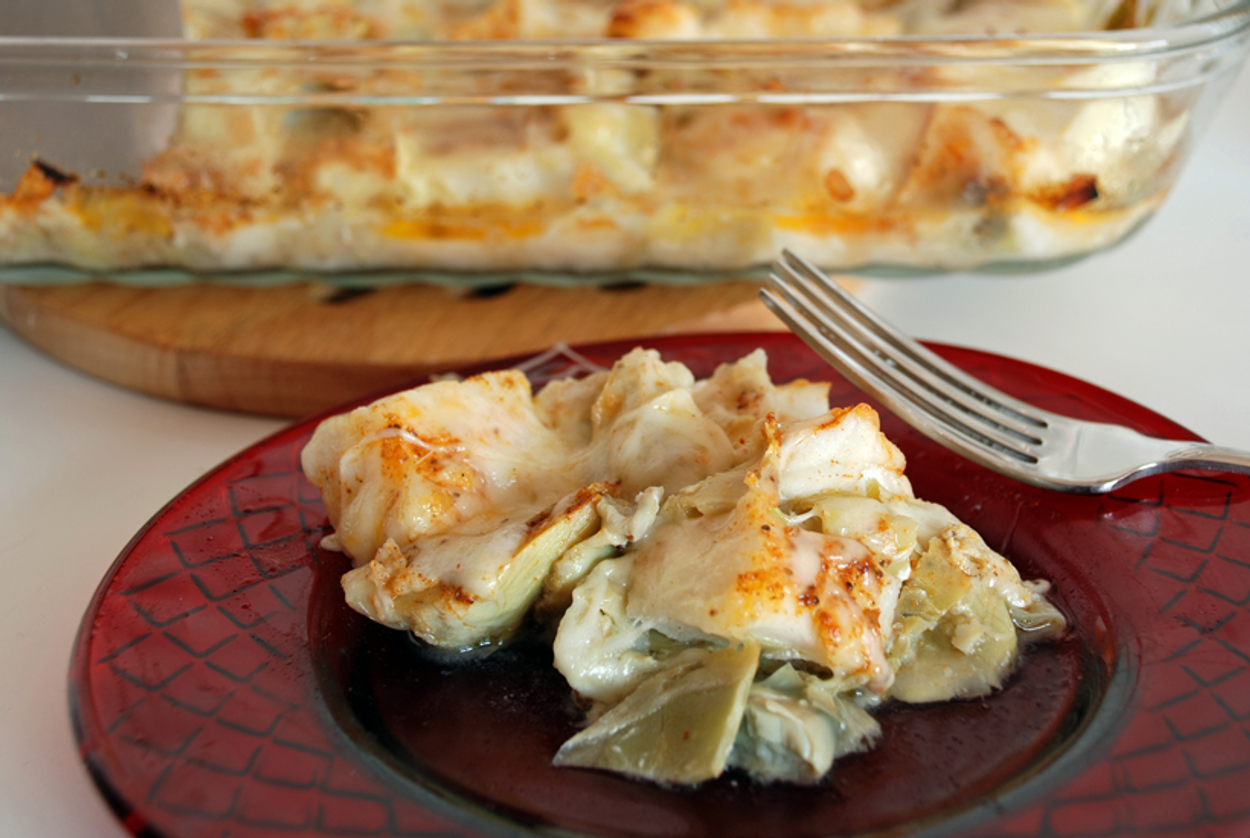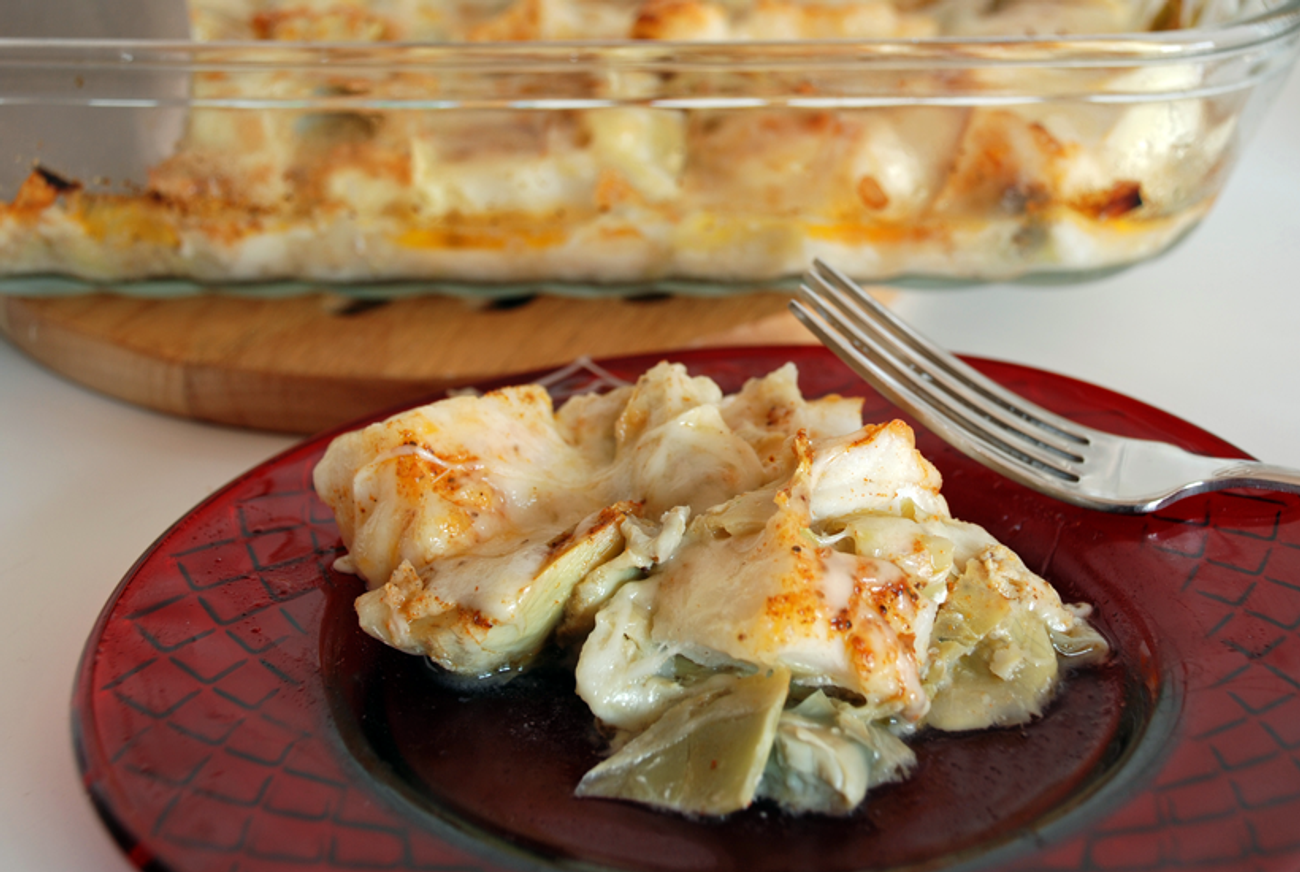Beyond Cheesecake and Blintzes: A Shavuot Recipe With Meaning
The holiday is significant for me as a convert, so I created a fish dish that blends my Italian heritage with my Jewish identity




More than other Jewish holidays, Shavuot invites me to reflect on and celebrate being a Jew by choice. The commemoration features a reading of the Book of Ruth, the story of the Moabite woman who chooses to stay with her Jewish mother-in-law Naomi after Ruth’s husband dies. Ruth is considered the first “convert” to Judaism, and her acceptance of Judaism mirrors the Israelites’ acceptance of the Torah that the holiday marks. In this sometimes overlooked but momentous festival holiday, Ruth is here—as are we converts along with her.
My own path to Judaism began when I fell in love with a Jewish man soon after finishing college. Converting was a natural step in our lives together. Truly feeling Jewish eluded me at first, so I turned to the kitchen and exploring Jewish food in hopes of forging that personal connection. But my Italian heritage seemed to tag along, much to my surprise; growing up, I hadn’t appreciated my dad’s Sicilian background other than thinking that lasagna with my dad’s homemade sauce was nature’s perfect food.
My culinary journey became more meaningful when I explored what my Italian past could bring to my Jewish present—minus the sausage and prosciutto, of course. I brought some Italian flavor and influences to Jewish food by using specific ingredients, making dishes from Italy’s Jewish community (beautifully documented in cookbooks by Edda Servi Machlin and Joyce Goldstein), and creating original recipes that blended the two culinary heritages and represented me at the table in unique ways. Soon I was trying my Italian grandmother’s recipe for cannoli while learning to make matzo balls. And then tweaking my dad’s meatball recipe to make it kosher. And then putting meatballs inside matzo balls.
Jewish holidays, already a time of seeking greater meaning, have always presented special opportunities to create symbolic and meaningful dishes. Shavuot, which has both agricultural and biblical dimensions, offers a particularly interesting canvas for culinary creativity. Most prominently, we eat dairy foods for several possible reasons: Shavuot comes in late spring, when young animals can graze and produce abundant milk. The Bible also refers to Israel as the land of milk and honey. And when the Jews received the Torah and laws of kashrut, they didn’t have time to implement kosher rules for meat—so, facing a culinary conundrum, made dairy meals instead. Another tradition is to eat mostly white foods (like rice and white cornmeal in addition to dairy) because the color signifies purity. And, given the timing with Israel’s grain harvest along with the biblical rites prescribing a bread offering, still another tradition is to eat breads, especially breads that are symbolically decorated.
But dairy really is the star of the holiday in the United States, and the go-to dishes, especially among Ashkenazi Jews, often are cheese blintzes and cheesecakes. For me, there’s one dish that holds special symbolism that I love to feature: my recipe for baked sea bass with artichokes, mozzarella, and Old Bay Seasoning. The recipe originated from a straightforward Italian and Italian-Jewish dish of mild fish baked with artichokes, lemon, and herbs. But I saw potential for reinvention.
Before I became Jewish, I loved a restaurant seafood dish featuring crabmeat, scallops, cheese, and Old Bay Seasoning. I loved this dish so much one time I ate two orders of it at one sitting. After becoming Jewish, that shellfish-laden dish was off the table (good thing I got that second order the last time). I thought I could replicate its flavor and texture with kosher ingredients, and the lovely Italian fish and artichoke recipe seemed like the place to start. The key flavor is Old Bay Seasoning; that secret blend of herbs and spices is popular in the Chesapeake Bay region for seasoning seafood, especially steamed crabs—so at first it felt wrong using it in a kosher recipe. Then I discovered in Joan Nathan’s book Jewish Cooking in America that Old Bay Seasoning was actually the brainchild of a German-Jewish refugee who had come to Baltimore. And I confirmed that the spice blend is now certified kosher.
For my dish (recipe below), I cut mild fish—I use sea bass, but you can also use sablefish—into chunks to replicate the scallops and toss that with chopped artichokes, which give a slight resemblance to crab’s consistency. Some butter, lime juice, and Old Bay round out the flavor. In the oven, a topping of mozzarella and provolone melts into a luscious white blanket that brings it all together.
Although unusual for Shavuot, the dish matches the holiday’s use of dairy and symbolic white food. Beyond that, with the Old Bay, I like to think it represents the ingenuity of Jewish migrants remaking their lives in new places, reminiscent of the ingenuity and perseverance of the Jews who escaped Egypt. And more personally, the recipe marries my past with my present, my Italian heritage with my Jewish one—on a holiday celebrating commitment, values, and community—a community that embraces Jews by choice and what each of us brings to the table.
Marcia Friedman is the author of Meatballs and Matzah Balls: Recipes and Reflections from a Jewish and Italian Life and The Essential Jewish Cookbook: 100 Easy Recipes for the Modern Jewish Kitchen.